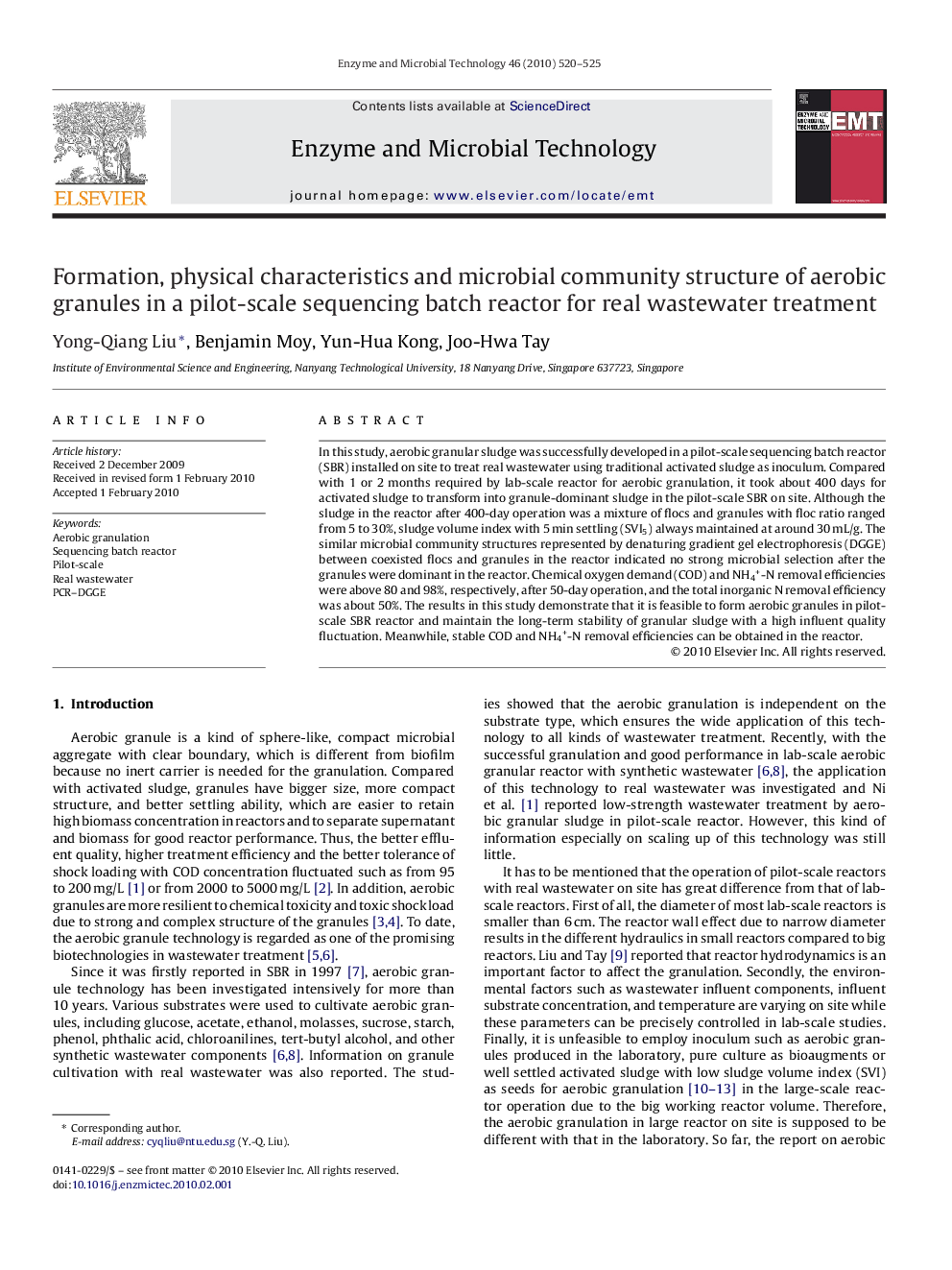| Article ID | Journal | Published Year | Pages | File Type |
|---|---|---|---|---|
| 10233136 | Enzyme and Microbial Technology | 2010 | 6 Pages |
Abstract
In this study, aerobic granular sludge was successfully developed in a pilot-scale sequencing batch reactor (SBR) installed on site to treat real wastewater using traditional activated sludge as inoculum. Compared with 1 or 2 months required by lab-scale reactor for aerobic granulation, it took about 400 days for activated sludge to transform into granule-dominant sludge in the pilot-scale SBR on site. Although the sludge in the reactor after 400-day operation was a mixture of flocs and granules with floc ratio ranged from 5 to 30%, sludge volume index with 5Â min settling (SVI5) always maintained at around 30Â mL/g. The similar microbial community structures represented by denaturing gradient gel electrophoresis (DGGE) between coexisted flocs and granules in the reactor indicated no strong microbial selection after the granules were dominant in the reactor. Chemical oxygen demand (COD) and NH4+-N removal efficiencies were above 80 and 98%, respectively, after 50-day operation, and the total inorganic N removal efficiency was about 50%. The results in this study demonstrate that it is feasible to form aerobic granules in pilot-scale SBR reactor and maintain the long-term stability of granular sludge with a high influent quality fluctuation. Meanwhile, stable COD and NH4+-N removal efficiencies can be obtained in the reactor.
Related Topics
Physical Sciences and Engineering
Chemical Engineering
Bioengineering
Authors
Yong-Qiang Liu, Benjamin Moy, Yun-Hua Kong, Joo-Hwa Tay,
